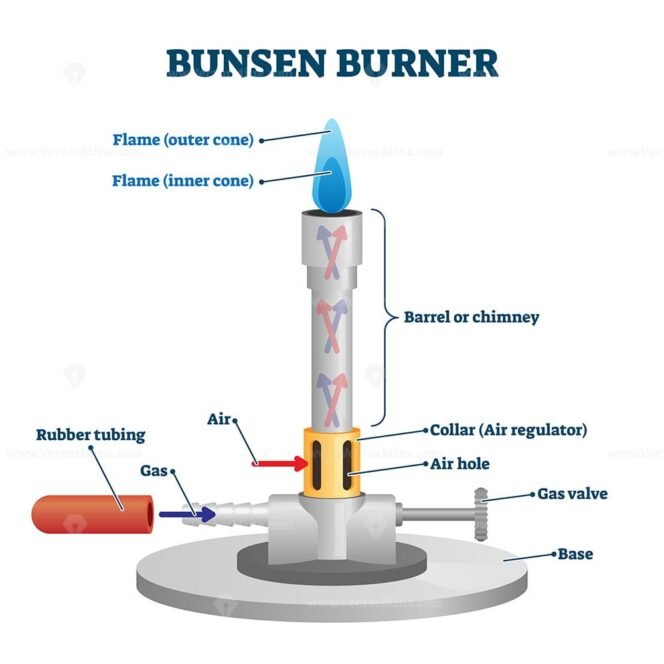
Bunsen burner lab equipment diagram VectorMine
A Bunsen burner is a type of gas burner that is used in many chemistry procedures in a laboratory setting. It is used to heat substances, to combust substances, and to sterilize objects on high.

Heating with bunsen burner
This Parts of a Bunsen Burner Labelling Activity is a perfect way to introduce KS2 to the exciting equipment they will be using in experiments. The fun illustrations will keep children engaged whilst labelling the parts of the Bunsen burner with the correct scientific language.

Topic Bunsen Burner ShowMe Online Learning
A Bunsen burner is a laboratory device that plays a crucial role in scientific experiments and research. It was invented by German scientist Robert Bunsen in collaboration with his lab assistant Peter Desaga in 1857. The burner was named after Bunsen, recognizing his contribution to its design and development.

Bunsen Burner A_Introduction to Science done
Terms in this set (9) Sign up and see the remaining cards. It's free! Start studying Year 7 - Topic 1 - Label a bunsen burner. Learn vocabulary, terms, and more with flashcards, games, and other study tools.

Tim Holtz 2013 LABORATORIE line When both parents were chemists and their labs were filled with
The Bunsen burner is an essential part of laboratory equipment used for heating materials in the laboratory. It consists of seven major components: the base, barrel (chimney), air regulator (collar), air holes, gas valve, gas nozzle, and gas intake tube. Base: It is a wide and weighty part, present in the bottom of the Bunsen burner, available.
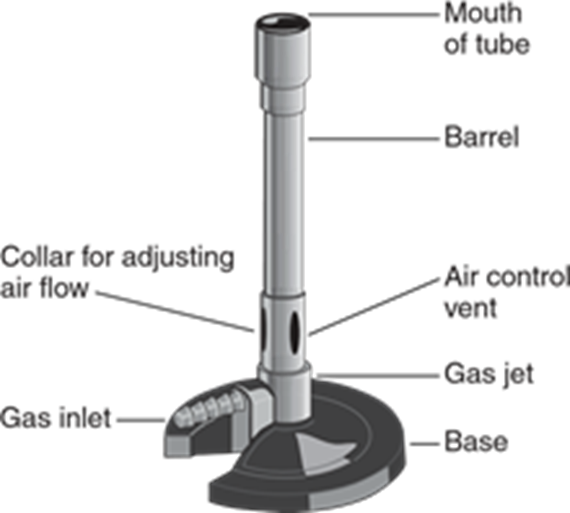
Bunsen Burner Hints and Tips Philip Harris
Collar, Base, Gas Valve, Chimney, Flame (Inner Cone), Rubber Tubing, Flame (Outer Cone), Air Hole, Heat Proof Surface.
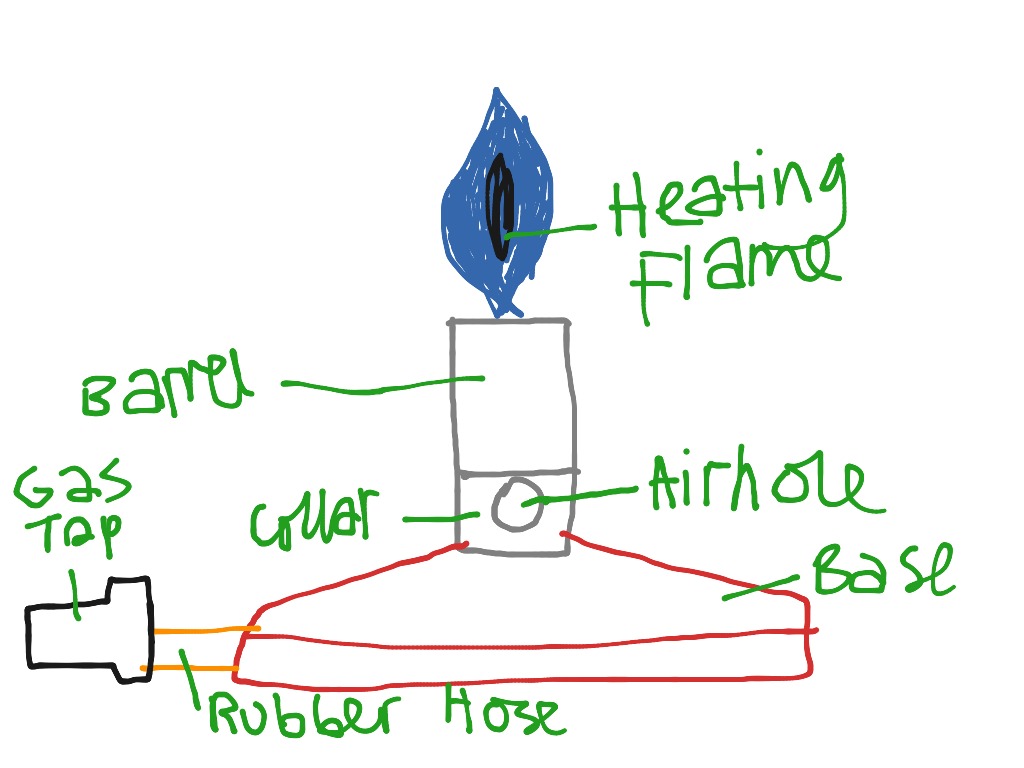
Bunsen Burner Parts Science ShowMe
A Bunsen burner, named after Robert Bunsen, is a kind of ambient air gas burner used as laboratory equipment; it produces a single open gas flame, and is used for heating, sterilization, and combustion.. The gas can be natural gas (which is mainly methane) or a liquefied petroleum gas, such as propane, butane, or a mixture.Combustion temperature achieved depends in part on the adiabatic flame.
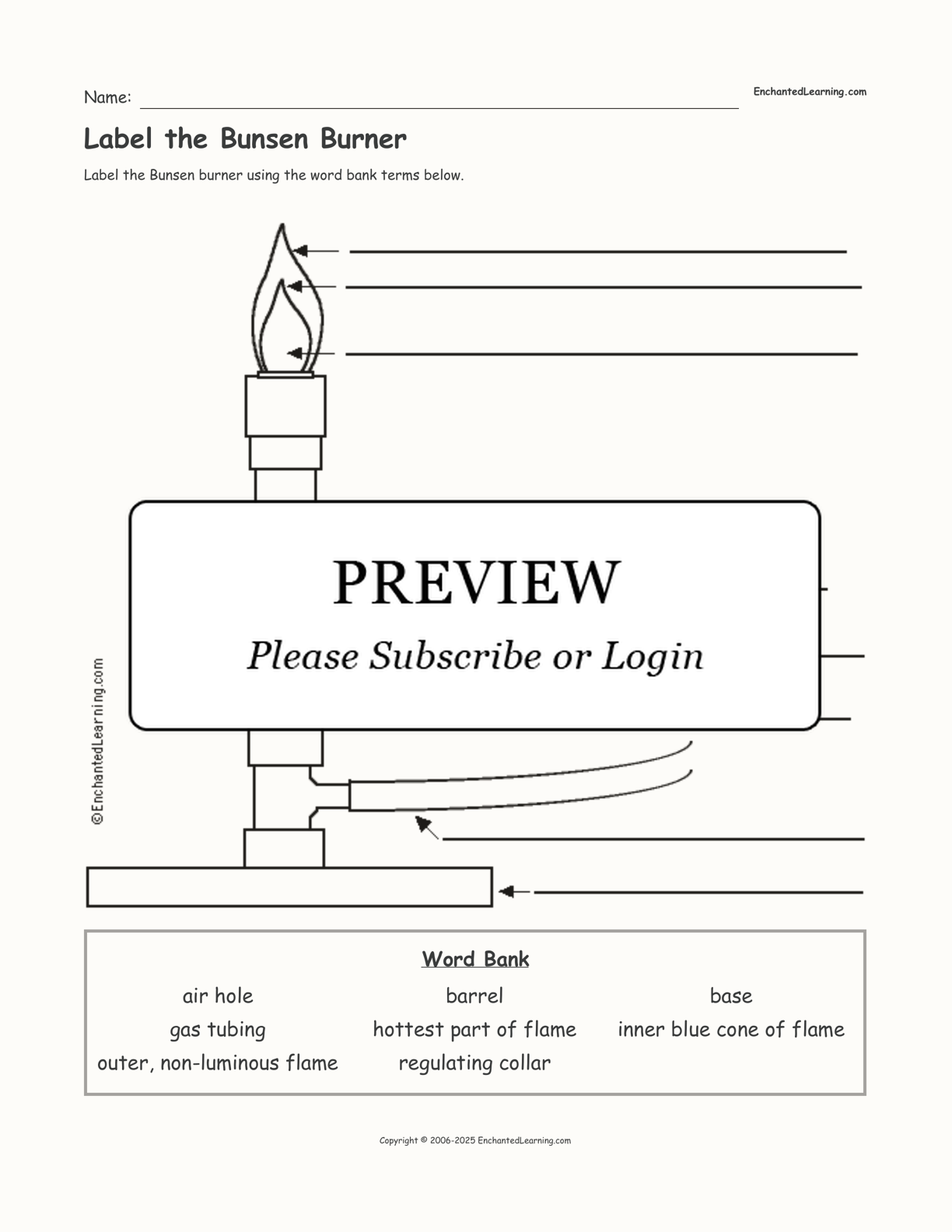
Label the Bunsen Burner Printout Enchanted Learning
Bunsen burners are a piece of equipment which produce a sootless, hot and non-luminous flame which can be used for various science experiments. Look at any picture of a chemistry lab and you'll see these burners on a laboratory bench. The flame is created by the gas and oxygen being mixed in a controlled environment, which provides precise.
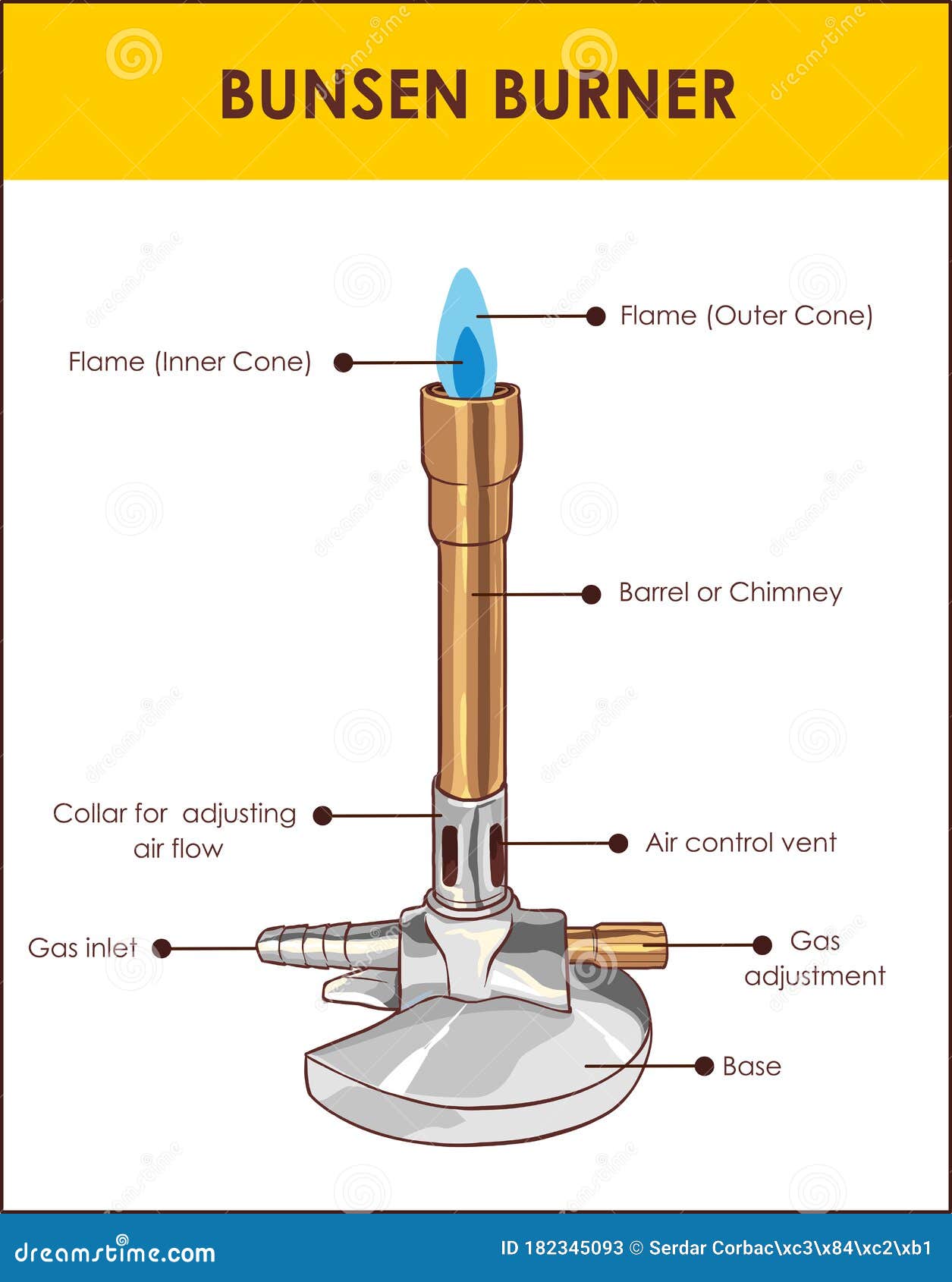
33 Label The Parts Of The Bunsen Burner Labels 2021
1. Barrel or stack: It is approximately 5 inches long to raise the flame to a suitable height for heating. This is where gas and air mix for combustion. 2. Collar: It is a small disk at the bottom of the barrel that adjusts to control the amount of the air entering the barrel. It has an air hole to allow entry of air into the barrel.
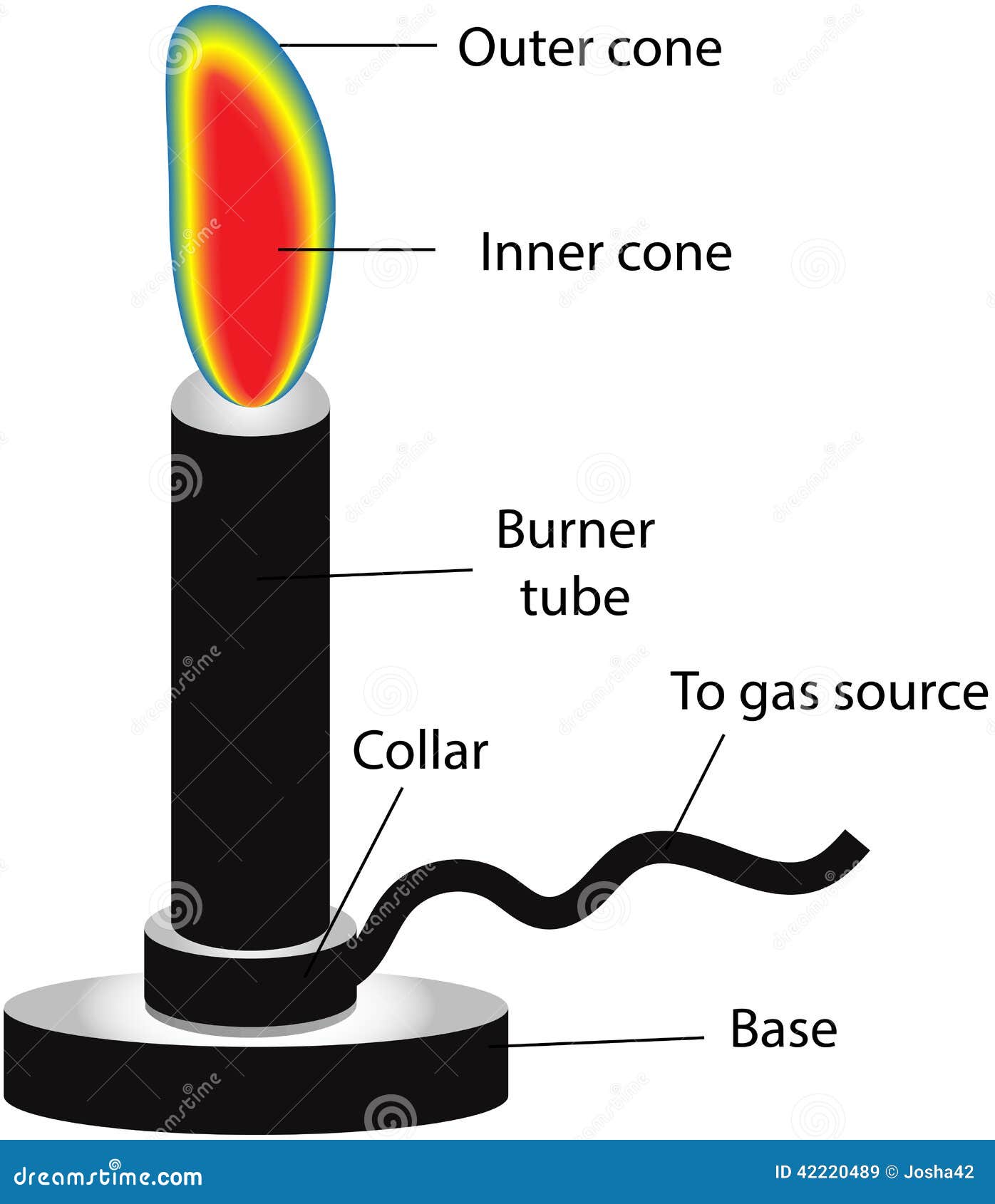
Bunsen Burner Labeled Diagram Stock Vector Image 42220489
Label the Bunsen burner Use the phrases shown below to label the diagram. collar base gas valve barrel or chimney flame (inner cone) rubber tubing flame (outer cone) air hole heat proof surface Bunsen burner flames and air hole positions Air hole closed: a yellow, sooty flame often called the 'safety flame'.

6. Label the given diagram of Bunsen burner with the phrases given below. Brainly.in
Look out for the labels on the bottles of chemicals that the scientist has in the lab, as well as how they use the Bunsen burner Video Transcript Risk and hazard A hazard is something that can.

The Poor Farm Celebrations Are In Order!!!!
Lesson Plan - Using a Bunsen burner. First, close the air hole. Next, light a match. Then, hold the match above the chimney. After that, turn on the gas tap. Finally, open the air hole to obtain a blue flame. The flame is blue when the air hole is open. The flame is yellow when the air hole is closed. 2.

Bunsen Burner Diagram AfsheinLakota
Using a Bunsen burner to evaporate - to turn a liquid into a gas - some water during an experiment is another practical technique that is often used. Image caption, Evaporation - 2D cross-section.
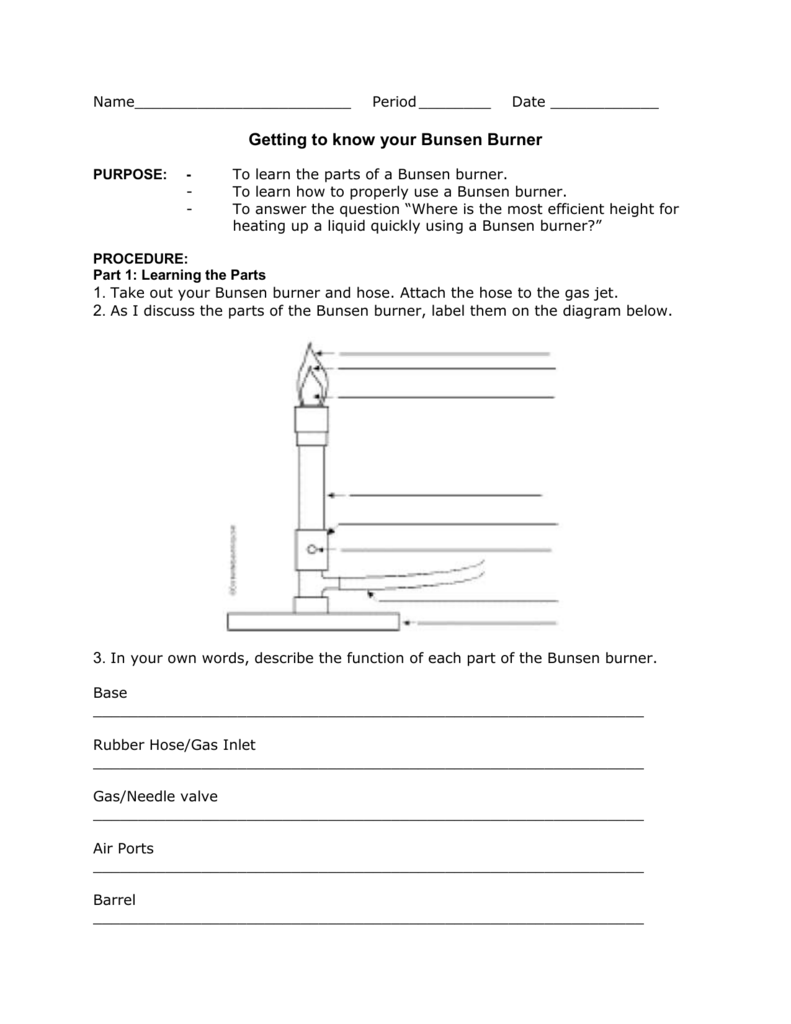
Getting to Know your Bunsen Burner
The Bunsen burner uses the combustion of methane (also called natural gas) and oxygen according to Equation 1 to produce heat. If enough oxygen is available, roughly two moles of oxygen for each mole of methane, then complete combustion will occur and maximum heat (flame) will be produced.
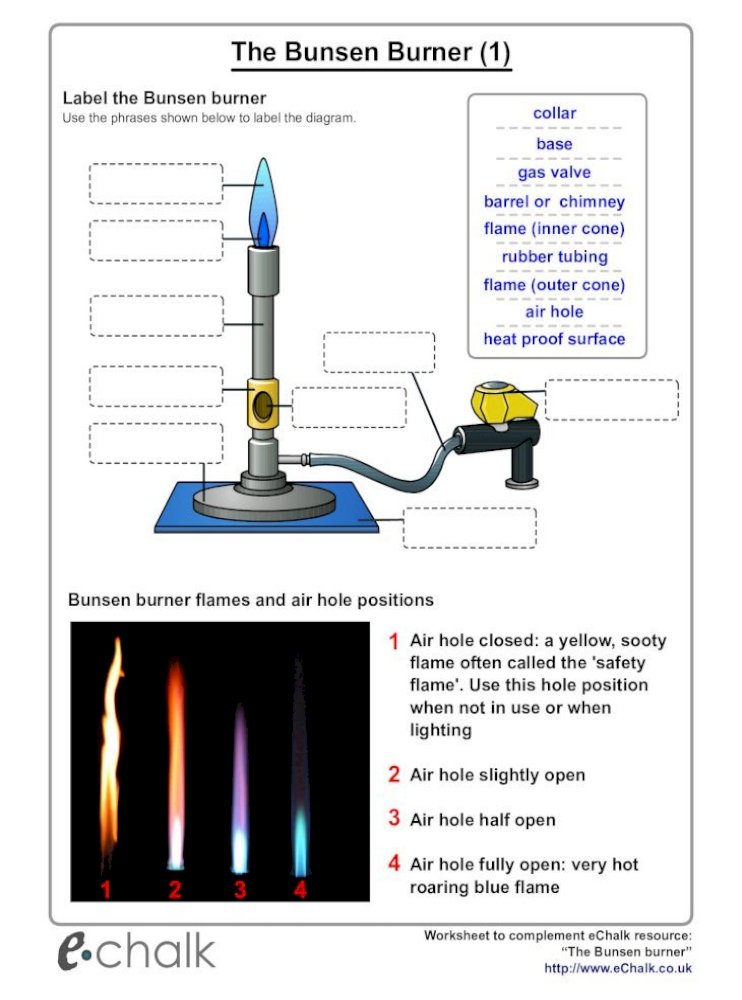
33 Label The Parts Of The Bunsen Burner Labels 2021
They should never be placed underneath shelves, light fixtures, or other equipment. Keep at least 12 inches of space clear above a Bunsen burner. Set up the burner: Place the Bunsen burner on a heat-resistant surface and connect it to the gas supply. Adjust the air intake until the flame is blue and stable.
The Bunsen burner labeling Labelled diagram
Bunsen Burner is a kind of gas burner that creates a safe, smokeless, hot, and non-luminous flame which can be used for various scientific experiments and research. In 1857, German scientist Robert Bunsen and his lab assistant Peter Desaga invented the Bunsen burner and named it after his surname.